From Joan of Arc to Murray Hill, Drag Kings Have Redefined Queer Culture
In the weeks leading up to this year’s Met Gala, the precise definition of camp seemed to be the fashion world’s sole fixation. What was it? What wasn’t it? And who gets to decide? “I asked myself what would be the campiest look I could pull,” says Sasha Velour, the Season Nine winner of RuPaul’s Drag Race. “And I decided it would be a drag king,” which contained the wink and nudge of purposefully performing Velour’s assigned gender (out of drag, Velour uses the “they/them” pronoun, but uses “she” in drag). After spending an hour accentuating the parts of her face that she typically disguises, Velour staged a photo shoot in her Brooklyn apartment as Alexander Velvet, her mustached “highly artificial” alter ego, and shared it on social media. The cigarette-wielding aristocrat was inspired by the drag kings of history, she wrote in the caption, “who I think are just as responsible for the camp sensibility as us queens!”
Drag kings have been largely absent from conversations about camp—or, for that matter, conversations in general. Despite a thriving, tight-knit scene of drag-king collectives, the art form remains on the margins of conventional drag culture, which, thanks to Drag Race, has sashayed squarely into the mainstream. We have an easier time accepting the pageantry of femininity, the thinking goes. But “masculinity is so inherently ridiculous and over-the-top and camp,” says Velour, who regularly features drag kings in her long-running NYC-based drag theater show, Nightgowns, which she now tours around the world: “I think about facial hair, which is a kind of decorative adornment, or the tuxedo, which is one of the most complicated and status-shifting garments in the world. Drag kings taught me to see the construction of the male image, and that in turn reminded me to be more flexible and have more fun with it. I think it’s a lesson the world needs right now, but we are lacking an appreciation for the artists pursuing it.”
That erasure from popular culture runs parallel to an erasure from queer history. Take Stormé DeLarverie, the comedian, singer, and drag king who hosted the Jewel Box Revue in the ’50s and ’60s, and is said to have thrown the first punch at Stonewall. Or Joan of Arc, the patron saint of France who was burned at the stake in 1431 for donning men’s clothing, considered a violation of natural decency. “There seems to be some investment in presenting [drag] as a new phenomenon, which is not right, specifically in a month about pride,” says Velour. “I interpret that word as taking real stock of what has been done historically to bring us to this point, where there is both a lot of freedom and a lot more work to be done.”
For GQ, Velour asked a handful of performers—some who identify as drag kings, some who don’t—to pay homage to a few of these masculine-presenting icons. One of these performers is Murray Hill, the self-proclaimed “hardest-working middle-aged man in show business,” who pays tribute to… Murray Hill. Together they complicate conventional notions of what it means to be a drag king, while highlighting the impact queer women, trans men, and non-binary people have had on drag history—and, by extension, camp. “It's my responsibility as a visible drag performer,” Velour says, “to know where it all came from.”
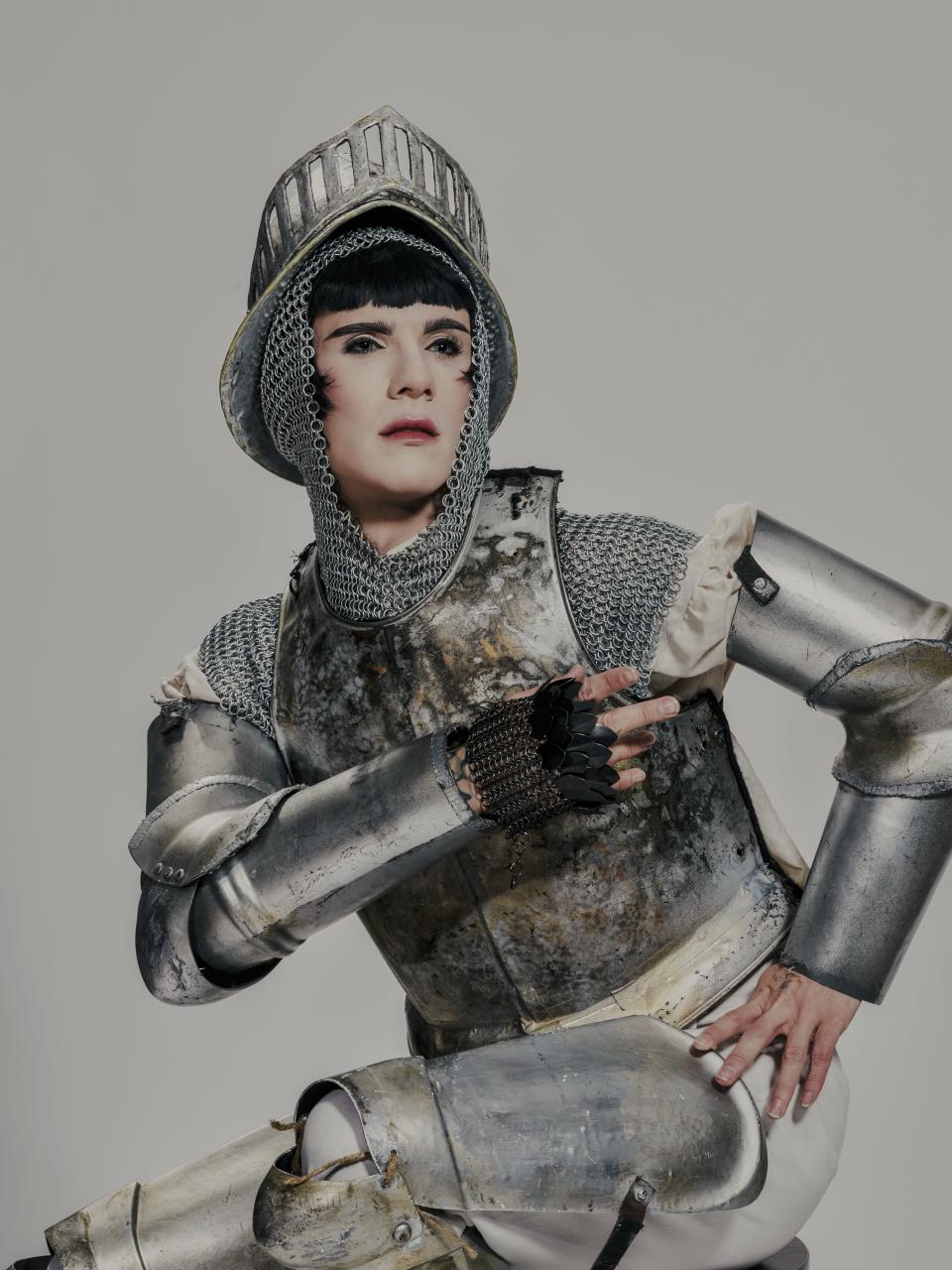
Joan of Arc was a fifteenth-century French peasant who was put to death for dressing in men’s clothes, not just in battle but every day. Although Joan has been claimed as a symbol by everybody from the Catholic Church to French nationalists, she was executed for the core "crime" of "cross-dressing." In this sense, Joan of Arc’s refusal to stop wearing menswear is crucial for gender-nonconforming people. It’s one of the first (if not the first) widely documented instances of trans or non-binary gender expression in history...and its tragic ending resonates with people who still face violence today. Rather than the tragedy of death, we wanted to focus on Joan’s popularity and veneration, which according to scholars like Leslie Feinberg points to an even more ancient history of gender variance that Joan was tapping into, which has either been erased or was barely documented to begin with.
Sasha Velour: Today we are honoring figures in history who have donned menswear in an act of transgression—but they mostly didn’t use the term “drag king” for it. Looking back at the history of drag, we see the phrase “male impersonator” a lot, but sometimes just “comedian” or “singer.” Queer terminology is always shifting and being updated, and “drag” right now means something very positive, a type of intensely gendered performance that’s lighthearted but also political…a category that people want to be part of. But that, too, may change. To kick off this discussion, can each of you share how you describe your art form right now?
Merlot (NYC-based artist and model): I would definitely call myself just an artist, period. I obviously display gender play, but it's all authentic. I don't turn off my non-binary when I leave the stage.
Vigor Mortis (Brooklyn Nightlife Awards’ Drag King of the Year, 2017): Sometimes I walk out onstage and identify as a drag king. But it's also an [opportunity] for me to figure out who I am as a person as well. Getting onstage helps me to articulate certain aspects of myself, because there's no other way to try something and say, “Oh, that didn't feel great. I'm not going to do that again.” We don't have a lot of places where it's completely acceptable to make mistakes. It wasn't until I did my first drag show with Switch n’ Play that I realized not only that I could be trans but that I was. I could put that type of masculinity on and walk around and be like, “Oh, yeah, this is correct for me.” It was very healing. When I transitioned, people asked me if I would identify as a drag queen now. Well, some people do. But I don't, because I still feel like there's more for me to explore within masculinity.
K.James (Brooklyn Nightlife Awards’ Drag King of the Year, 2016): I identify as a drag king. I've seen a lot of trans people change how they want to be identified, because people assume it means you're a woman. But for me, I'm still a drag king even though I'm trans, because it's an important history to me. And trans people can do drag—that's still very much a part of their identity.
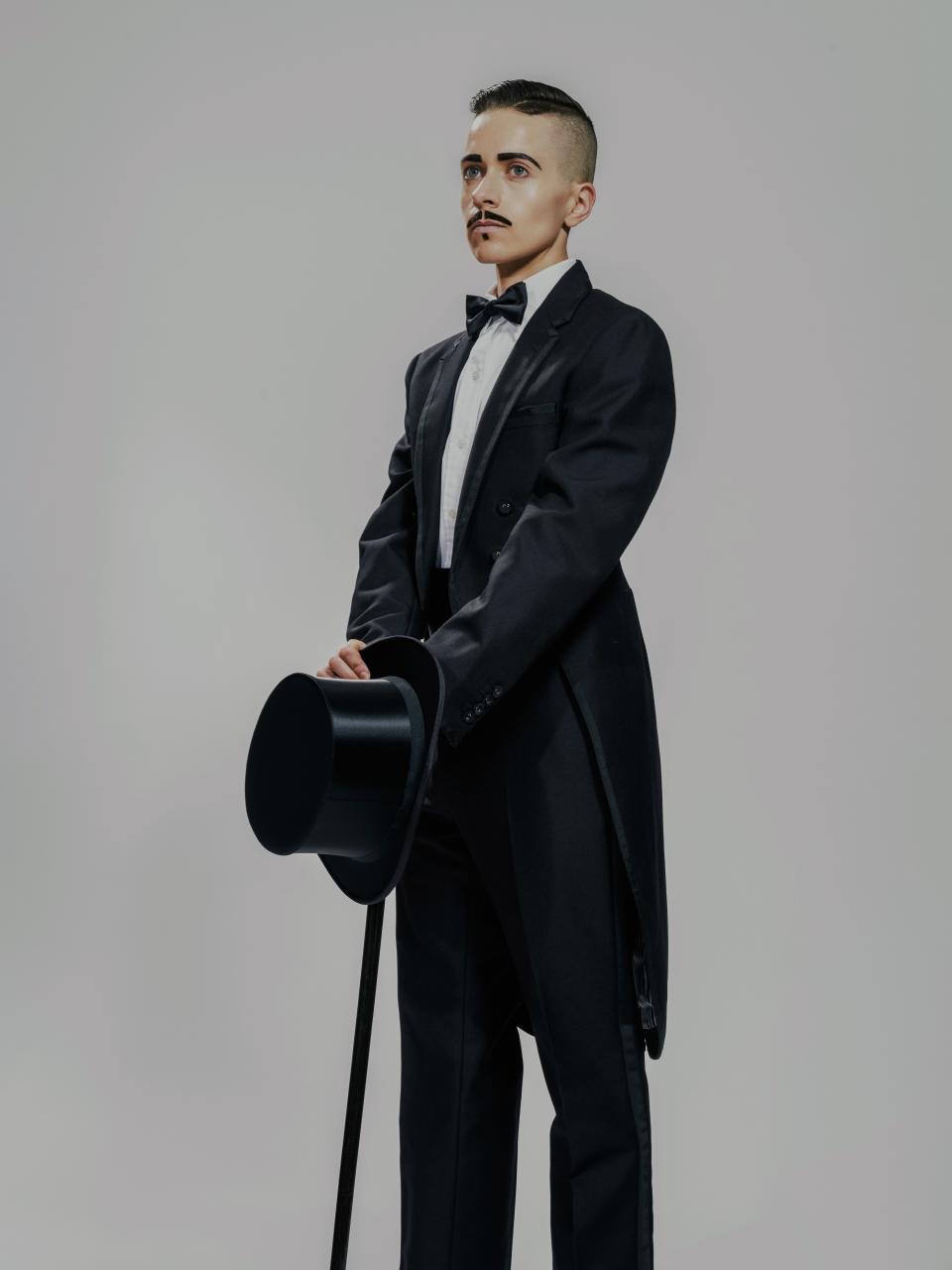
With big celebrity names like Annie Hindle, Ella Shields, and Vesta Tilley, the American and European vaudeville circuits of the late 1800s and early 1900s were full of self-described “male impersonators” who dressed in suits, uniforms, sailor costumes, and more while singing, dancing, and telling jokes to great success onstage. Although they were hardly the first masculine "cross-dressers," vaudeville stars reached new heights of mainstream success and popularity. Vaudeville opened the way for many LGBTQ people to achieve success in their fields, but they still largely had to remain closeted off stage.
Nyx Nocturne (drag and burlesque multidisciplinary artist): I feel like I come from a very different perspective because I identify as a gender-fluid draglesque [editor’s note: drag and burlesque] beast. I very much leaned into the labels because my performance persona is a very sensationalized representation of all of my intersecting identities, and how othered every single one of them are. Fine. If I don't fit anywhere, I'm going to throw it in your face. I think I very much went the Disney-villain route. Like, if you don't want me, I'm going to take over your kingdom. [Laughs.] If you're going to other me, if you're going to fear me, I’m going to give you an image to fear. And that feels really powerful to me.
Murray Hill (legendary New York City comedian): From the beginning, which was when I had cheekbones like K.James, I never wanted to be called [a drag king]. Part of my strategy is to be an assimilationist, to work from the inside. I know, I know. I'm old-school. So I always felt anytime you put anything in front of my name, I'm not equal to you. From day one, 23 years ago, I fight and fight and fight just to be called a comedian. There's so much language now, so much identity politics. I come from a time when we had nothing. No words, no shit. There was no “trans”; they called you “tomboy” or an “asshole.” Obviously, I come from the drag-nightlife world, but I also come from the straight world, the showbiz world. So my whole thing has been Murray. I'm Murray. I just want to be like everybody else. Showbiz!
I call myself a “drag queen” very proudly, because so many important figures in our recent history have used that term to describe themselves—from activists like Sylvia Rivera to superstars like RuPaul—and I want to honor that lineage. It strikes me that because drag—and queer artistry in general—is not something typically taught in schools or at home, our sense of what is possible or what it means often comes directly from the people who introduce us to it as adults. So can you talk about some of your personal artistic inspirations? None of us got this out of nowhere—except for maybe you, Murray. [Everyone laughs.]
Murray Hill: I was born this way.
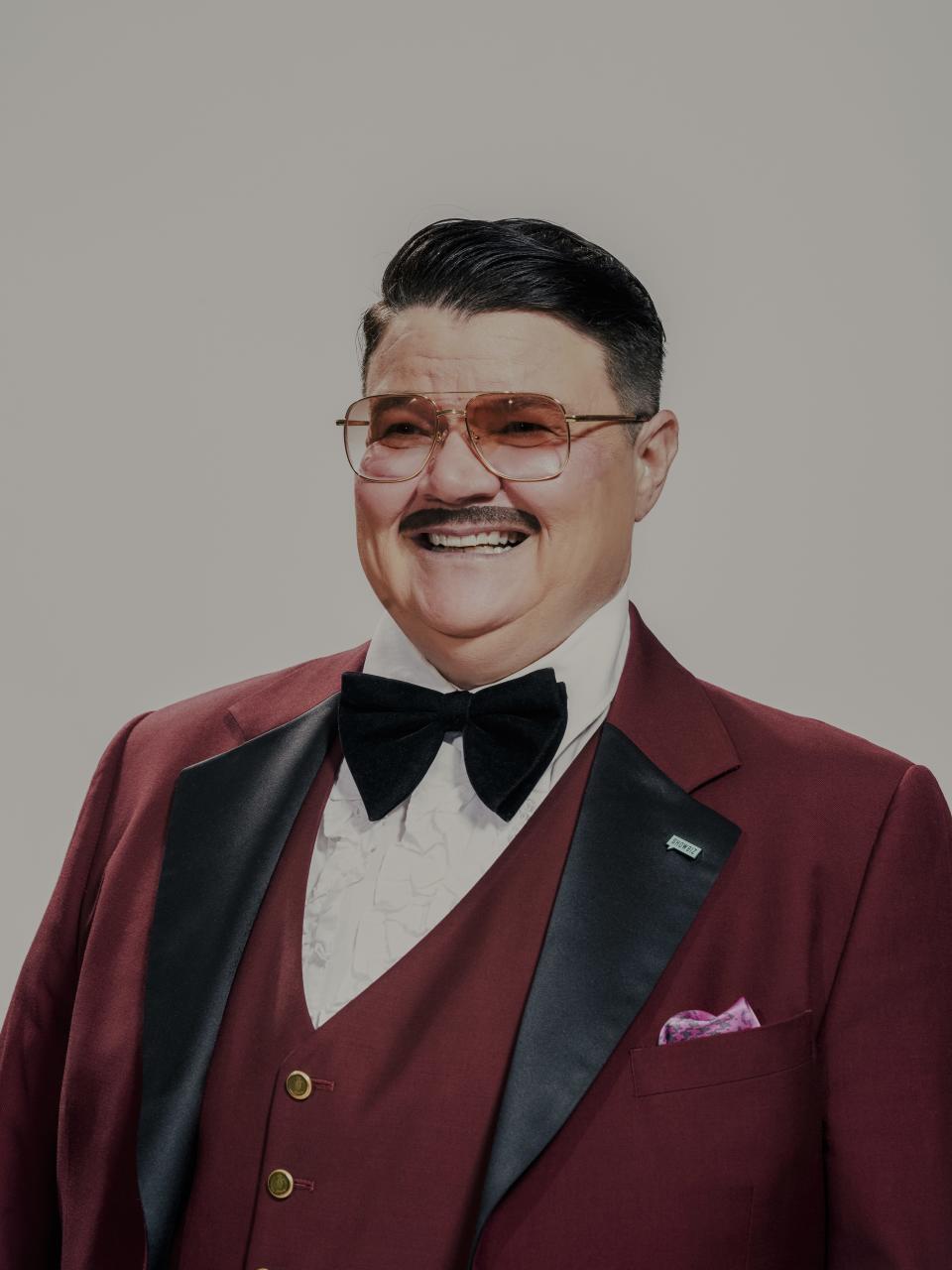
Murray Hill is a well-known New York City comedian and international entertainer, the self-proclaimed "hardest-working middle-aged man in show business.” Murray Hill got his start in NYC in the ’90s East Village scene, and was best known as a popular emcee. Inspired by the camp stylings of many drag queens around him at that time, and drawing on references from television and stand-up, Murray helped popularize a masculine camp drag sensibility that is still popular today.
Merlot: When I was in high school—around 2011, 2012—I used to stay up at night and watch queer people like Mykki Blanco, Juliana Huxtable, Cakes Da Killa, and Zebra Katz online. Growing up in rural Florida, there was this resurgence in Brooklyn that really saved me. When I watched these performers, I didn't think about their gender or gender expression. I thought I was going to have to make a bunch of sad songs. I didn't know people like me could feel empowered and express that through music.
K.James: My first exposure to drag was the founding kings of Switch n’ Play. There were seven of them when I moved here, and every single person had their own identity, their own intersecting facets of their lives that allowed me to find new ways to look at my own gender. That showed me you can play with masculinity in several different ways. Murray, you are also a very early influence. In the Brooklyn scene at that point, there weren't really a lot of drag kings, so it was Switch n’ Play and Murray Hill.
Murray Hill: It's the same, isn't it? [Laughs.]
K.James: There are a few more now. Just a few.
Nyx Nocturne: The first signature act I performed is based on one of H. P. Lovecraft's most racist characters: an elderly guy called Shub-Niggurath (“The Black Goat of the Woods with a Thousand Young”). It's exactly like it sounds. I'm not somebody who will say the N-word to reclaim it, but that type of imagery is my way of reclaiming those really, really damaging stereotypes. Taking it and making it something truly powerful and terrifying and being the epitome of what he hated—and having people cheer for that; that's really where my inspiration comes from.
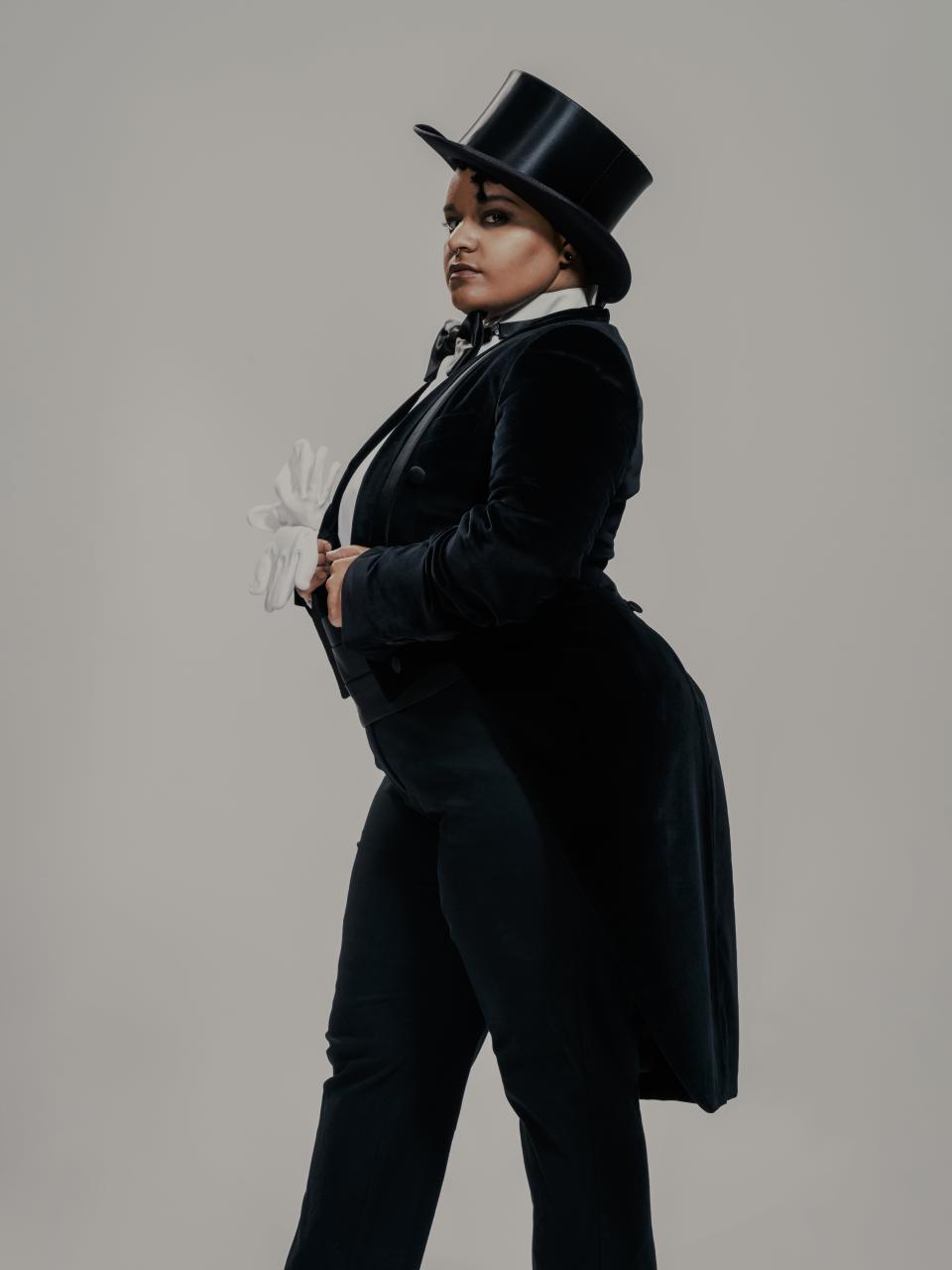
Gladys Bentley was a black, lesbian, cross-dressing pianist and singer who headlined at popular clubs throughout the 1920s and ’30s in Harlem, sometimes backed by a chorus of drag queens! Unlike “impersonators” of the vaudeville era, Gladys Bentley wasn’t attempting to “pass” as a man, but instead to put forward a distinctly queer expression of gender that spoke specifically to black lesbian experience. She was so popular and beloved, I’ve seen her described as one of the most powerful (and wealthy) figures of the Harlem Renaissance. In the 1950s, during the McCarthy era, Bentley claimed to have “cured” her homosexuality and gender-fluidity by taking hormone replacements, and she became a minister. She died in 1960, before the dawn of the contemporary gay-liberation movement.
I feel like that runs through a lot of queer art. It’s certainly a big part of being a drag queen to me: the idea of taking those narratives that do violence and then embodying them in ways that re-infuse us with possibility and power and agency. There is always a “fuck you” embedded into it; there's a resistance to the straightforwardness of that image.
Vigor Mortis: Honestly, I owe a lot to Miss Malice, because the first number I ever did, at Switch n’ Play, was a doozy. It was just stupid. But she looked at me and went, “I see what you're doing. I see that you're being tongue-in-cheek about masculinity, and I think you should try this again.” And if it wasn't for K.James and Miss Malice, I would not be doing drag. So I'm working with my drag inspirations right now, which is kind of incredible.
Murray Hill: As a kid my biggest inspirations, without me knowing it, were Norman Lear sitcoms. They were so full-blown. All in the Family, George Jefferson, Maude, all that stuff. I was really obsessed with Jack Tripper from Three's Company, from the physical comedy aspect, the camp stuff, the double entendres. And Johnny Carson, of course. During that time I was a tomboy and dressing up as a motorcycle guy for Opposite Sex Day.
Opposite Sex Day?
Murray Hill: Yeah, I don't think that they have that anymore. I'll never forget: I think I was a sophomore in high school, and I dressed as a tough motorcycle guy and my art teacher came up and goes, “Eh, you look better as a man.” [Everyone laughs.]
Vigor Mortis: And the drag journey begins.
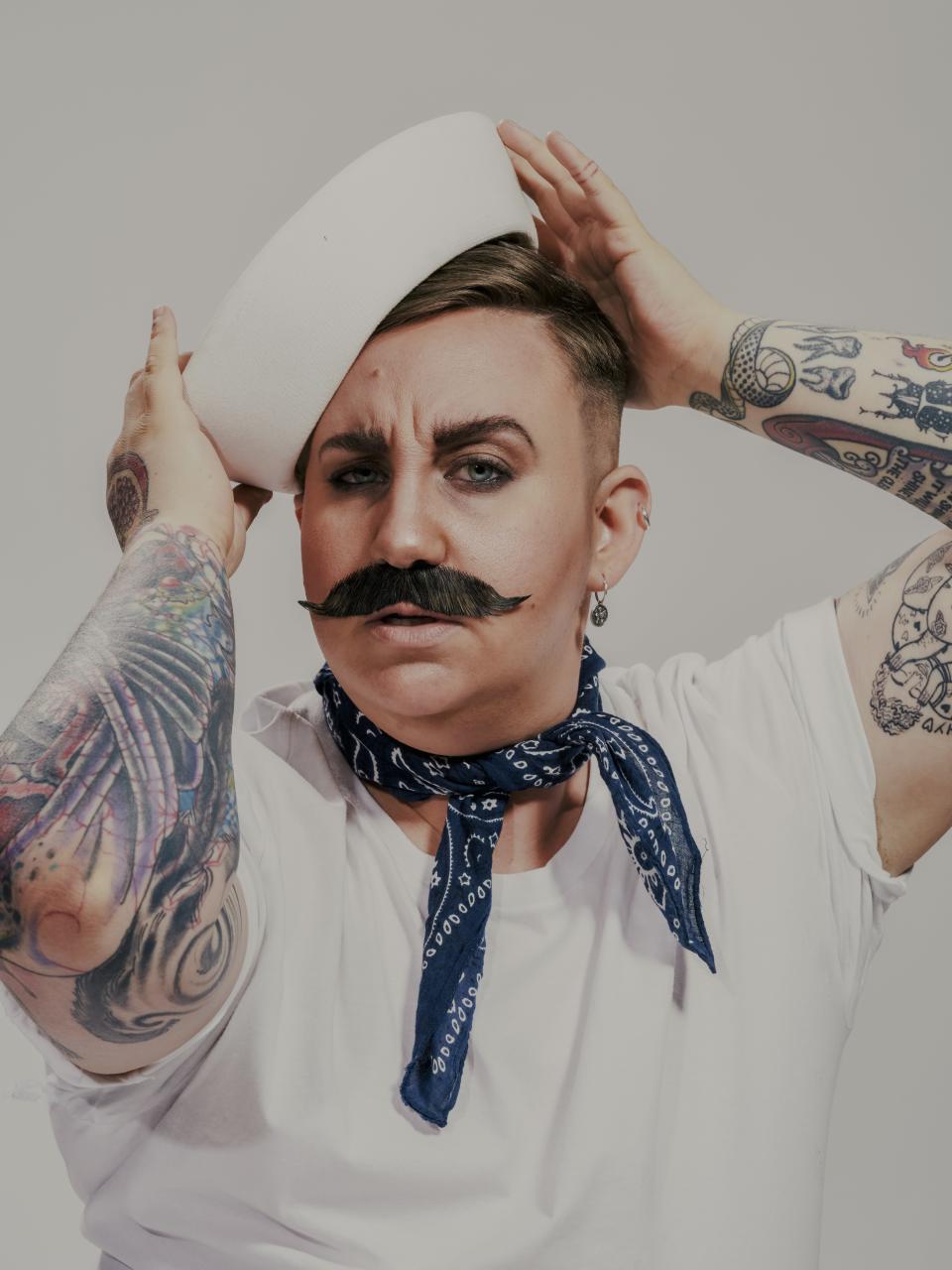
In America, some early vaudeville stars built their reputation in blackface minstrel shows, which were the most popular form of entertainment throughout the 1800s and frequently involved cross-dressing. It’s important not to gloss over this disgusting and racist history, but we also don’t want to call out any individuals who were complicit in it. That’s why K.James and Vigor do not represent specific figures in this photo shoot.
Murray Hill: I was inspired by photography a lot, like Diane Arbus, Nan Goldin. I snuck into these clubs as a photographer—I lied and said I was with the Boston Phoenix—and this is how I got to meet some New York drag queens: Flawless Sabrina, Lady Bunny, Candis Cayne. I just got obsessed with photographing drag queens. I loved the camp aspect, the politics of it. The drag queens in New York inspired me a lot.
Let’s jump ahead and talk about menswear. What does it mean to you, and how does it connect to your masculinity?
K.James: The moment I could choose my own clothing, I was choosing menswear. But trying on menswear in the women's room was always a huge issue. In doing that, I was preparing myself for all the looks I was going to get in life. At least with drag, I get to invite the looks I want onstage. It’s like taking the gaze and making it what I want.
Vigor Mortis: I didn't understand the power of clothing until I transitioned. It's not just how does it fit? It's how does it make me feel? Before transitioning, I legitimately thought I was having a fashion crisis. So I would go from trying to perform super high femininity—like wearing heels, a full face of makeup, dresses—to shaving my head and giving all those clothes away. I was trying so hard to be on a binary. But I couldn't figure it out.
If masculinity and femininity are a hodgepodge of things, I am a hodgepodge of things, and I am fine with that. It took a really, really long time to get there, but menswear was the gateway. A hundred percent. If I didn't have menswear after performing, I wouldn't be able to do what I do onstage. There are certain things I take away from those characters I play onstage and bring back to myself, and that feels really good.
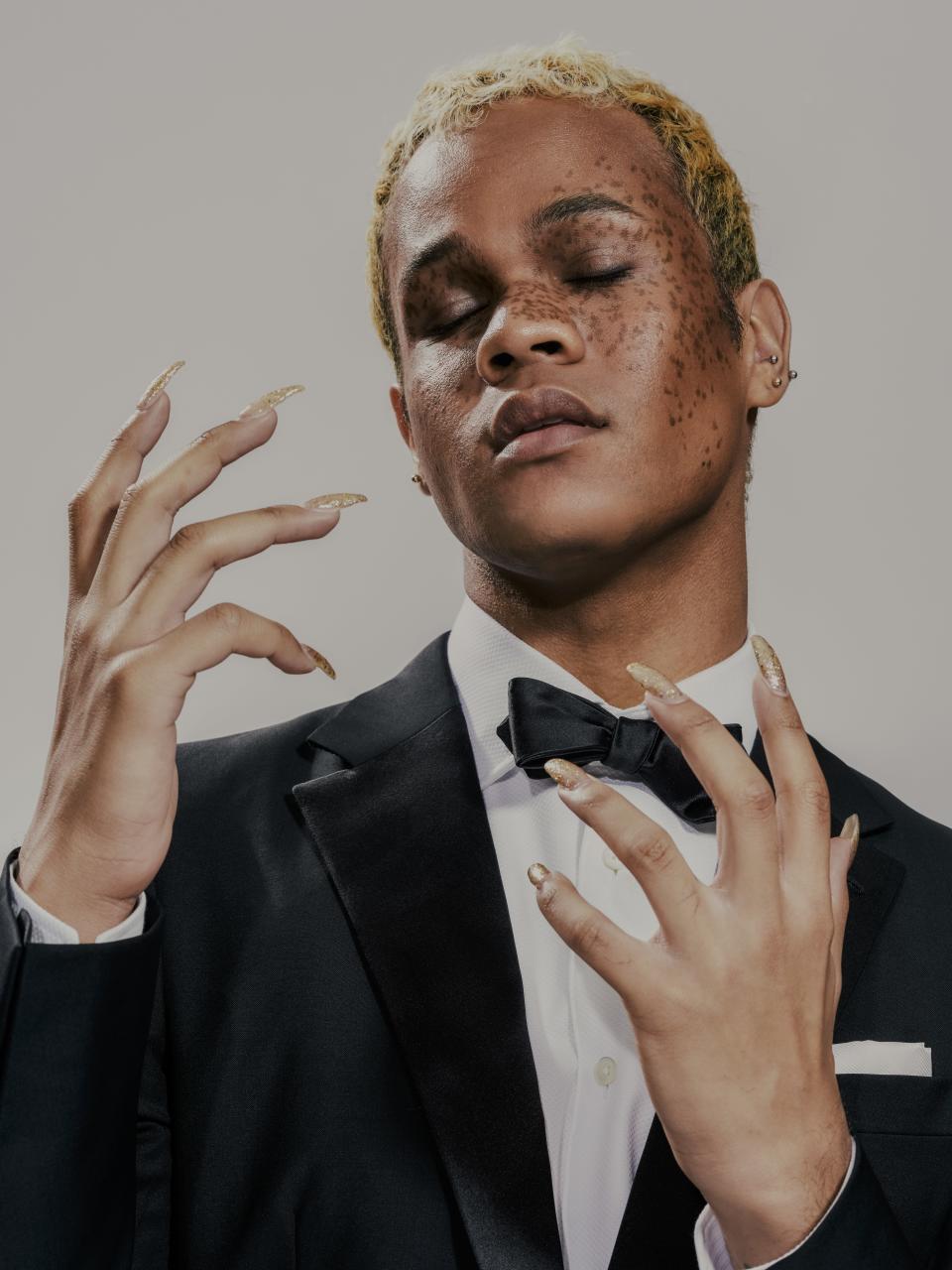
There were more than 16 drag shows that appeared across the States during the 1930s. Among them was the Jewel Box Revue, founded in Miami, which toured the U.S. for approximately 30 years. Although it was common to cast a butch lesbian as the host of a femme revue, the Jewel Box broke boundaries by casting black jazz singer Stormé DeLarverie. DeLarverie remained a fixture of the show for more than a decade, doubling as its stage manager and musical arranger. She went on to become a beloved NYC nightlife fixture, working as a bouncer in many lesbian bars, and died in 2014. Many people believe that Stormé was first to instigate fighting back against the police during the Stonewall uprising. She herself claimed to have left a cop knocked out cold on the sidewalk that night for having tried to hurt her!
Merlot: I had a very similar story to yours but the opposite. Menswear was a nightmare for me as a kid. Family trips to the mall, suits for church, I didn't want it. Even to this day dressing rooms are a weird place for me. In middle and high school, I was constantly trying on my mom's clothes when she wasn't looking, and thinking, “Oh, my God, this is so much cooler.” I didn’t feel imprisoned. It wasn't until I went to college and got to play with makeup in public that I felt empowered to play with different clothing, different silhouettes, and wear them outside.
That was my experience, too, except for the suits part. I always have loved formal menswear. I wore a full tuxedo with tails to be the ring bearer at my aunt's wedding, and I wanted to dress like that every single day. Shiny shoes that I could dance in, jewelry on my cuffs, a cummerbund. I think that’s why drag kings, or other queer artists who express themselves with menswear, really spoke to me. I’m the kind of queen who loves a suit—and why not? Clothes are just gorgeous, or sometimes hideous, sculptures made of fabric. They shouldn’t be forced on someone, or forbidden from someone, or used to police an identity. Drag allows me to enjoy the positive aspects of fashion as a whole, without the binary set of rules. If only daily life, or just walking down the street, was that open-minded.
Nyx Nocturne: For New Year's Eve one year, I put a suit on for the first time, and never in my life did I think I could wear something like that. I thought I would be in A-line dresses for the rest of my life, because I’m short and that was the only thing that was supposed to be okay on my body. I found these cheap suit sets at Kmart for women, and I bought five of each piece because it was the only time something that looked like that would fit on my body. At this point, they are raggedy as hell, but I still have them because they're so special to me. I went out that New Year's Eve, and I had never felt more beautiful. I also went out in a full face of dramatic makeup, and somehow finding that masculine side also allowed me to play with the feminine side as well. That was really the beginnings of this non-binary identity, where I felt like it was a negotiation between presentations.
Murray Hill: For me, it's all about the suit, professionally and personally. A suit has always been armor, a shield, and a superhero cape. It's also given me privilege and access. I'd rather be at the table than not be at the table, and I've been able to get at more tables with the suit on, sitting there at places where I wouldn't normally get access to. I feel safer walking down the street in a suit. And it also gives me visibility, because I’ve always felt invisible as a kid. Even though drag kings are pretty much invisible 25 years later, I still feel like I'm seen more and acknowledged more as a masculine person in a suit. Even for a soft guy like myself.
Conceptual Direction and Photo Captions by Sasha Velour Hair for Murray Hill by Francis Rodriguez
Watch Now:
Trixie Mattel Comes to Life
Originally Appeared on GQ

